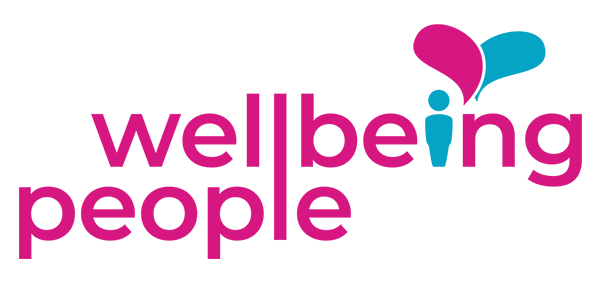As the summer sun and heat intensifies, it’s the perfect time for organisations to re-energise their workplace culture with fresh, seasonal approaches to wellbeing. In this article, we explore six practical and impactful summer wellbeing trends that businesses can tap into this season to boost morale, reduce burnout, and foster a more vibrant and connected workforce.
Summer Wellbeing Trends: Boosting Workplace Vitality in 2025
In 2025, wellbeing strategies are evolving to meet hybrid work realities, rising mental health needs, and employee expectations for flexibility and authenticity. We look at top summer wellbeing trends shaping forward-thinking workplaces this season:
1. Flexibility First: Summer Hours and Async Work
What’s trending: More organisations are implementing summer hours, compressed workweeks, half-day Fridays, or fully flexible schedules.
Why it matters: Studies show that reduced work hours in summer lead to better focus, less burnout, and no dip in productivity. This is especially valuable in a hybrid or remote-first model where employee autonomy is a driver of satisfaction.
How to implement:
- Pilot 9-day fortnights or summer Fridays.
- Offer employees time-blocking tools or templates for async collaboration.
- Clearly communicate expectations to ensure alignment.
2. Outdoor Wellbeing Experiences
What’s trending: Walking meetings, park-based mindfulness sessions, outdoor yoga classes, and nature challenges.
Why it matters: Natural light and fresh air improve mood and cognitive function. Facilitating movement outdoors also breaks up sedentary patterns, especially in desk-based roles.
How to implement:
- Partner with local parks or green spaces.
- Incentivise step challenges or mindfulness minutes outdoors
- Promote "sun-safe" wellbeing (hydration, SPF, and breaks in shaded areas).

3. Micro-Retreats and Wellbeing Days
What’s trending: Single-day "wellbeing retreats" either on-site or off-site, blending mental recharge with social connection.
Why it matters: These offer a mental health reset without needing extended leave and show a proactive commitment to wellbeing.
How to implement:
- Organise a quarterly wellbeing day in summer with optional workshops or relaxation stations.
- Include guided breathwork, digital detox activities, and creative sessions.
- Invite guest speakers focused on seasonal topics like managing summer stress or staying active in the heat.
According to research published in Nutrition Reviews, even mild dehydration (a loss of just 1–2% of body weight) can impair cognitive performance, mood, and concentration levels in adults.¹
4. Nutrition & Hydration Nudges
What’s trending: Hydration stations, seasonal snacks, smoothie bars and pop-up nutrition stands are making a splash in workplace wellbeing this summer.
Why it matters: Hydration is directly linked to alertness, energy, and cognitive function, especially in warmer temperatures when dehydration risks increase. In other words, sipping more water doesn’t just quench thirst, it sharpens focus and supports emotional wellbeing.
How to implement:
- Provide chilled water stations. If possible, make some natural fruit infusions available to encourage drinking more water (maybe a refreshing lemon-mint or cucumber-lime).
- Launch a light-hearted summer “Hydration Challenge” with reusable bottle giveaways or wellbeing points.
- Share hydration facts via screensavers, posters, or email nudges. For example: “Feeling sluggish? Your brain is 75% water!
Bonus tip: Pair hydration efforts with light, nutrient and water dense snacks like watermelon slices, frozen grapes, or yogurt pots, all of which are perfect for warm afternoons and maintaining energy without heaviness.
5. Mental Health Maintenance: Light Touch, High Impact
What’s trending: Short-form mental health interventions, such as 5-minute breathing sessions, self-check-ins, and brief team get-togethers with wellbeing prompts.
Why it matters: Summer doesn’t automatically mean less stress. Juggling holidays, childcare, and workload spikes can amplify strain.
How to implement:
- Share weekly mental wellbeing resources.
- Encourage managers to model micro-check-ins ( a short, focused session designed to foster transparency, accountability, and open communication)
- Provide access to online wellbeing programmes, apps or drop-in online therapy sessions.
6. Inclusive Wellbeing for All Life Stages
What’s trending: Tailoring summer wellbeing offerings for diverse needs, from parents and caregivers to neurodivergent employees and shift workers.
Why it matters: One-size-fits-all approaches often exclude those who need support the most. Inclusive programming fosters true wellbeing and belonging.
How to implement:
- Host parent-friendly lunchtime events.
- Offer flexible participation formats (live and on-demand).
- Seek feedback to co-create inclusive offerings.
summer wellbeing: Make It Real, Make It Measurable
The best summer wellbeing programmes are not just a feel-good gesture, they’re strategic. Align your offerings with your organisation’s values, collect feedback, and use pulse surveys to measure impact.
Now’s the time to turn the sunshine into strategy. A vibrant summer wellbeing plan boosts not only morale but retention, engagement, and performance.
Ready to implement summer wellbeing trends?
Our interactive workshops and webinars are a great place to start; covering key topics across physical, mental, and emotional health. From the importance of hydration and nutrition to breathwork and mindfulness and strategies for building resilience and boosting energy, we’ve got your team’s wellbeing covered.
